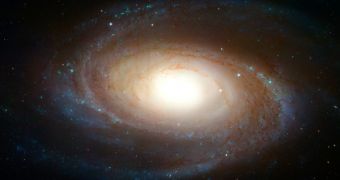The way galaxies transform from the pinwheel-shaped spirals – that tend to be blue or reddish – to the egg-shaped ellipticals was unknown to astronomers up until Hubble decided to send back a new set of pictures, detailing extremely rare red spiral galaxies, which experts now think may be the missing link between the two main classes. This discovery could potentially shed some light on the way galaxies evolve over the course of their enormously long life.
"We want to establish the link between the different stages more firmly. At the moment what we see is that one type of galaxy gets replaced by the other. But we have not been able to watch any individual galaxy for millions of years and establish that it changes along this particular route," explains University of Oxford astrophysicist, Christian Wolf, who adds that scientists may have finally found the “missing link” between young blue spirals and old red ellipticals.
"We have been used to just sorting galaxies by their color — red and blue. We needed either the Hubble Space Telescope to see their morphology more clearly and say that some of these red galaxies are actually spirals. Or we needed a much larger sample, such as Sloan Digital Sky Survey with Galaxy Zoo, to really spot them," the researcher told the website Space.
Shutting down star formations is critical for galaxies, if they are to transform from spirals to ellipticals. It would appear that lower-mass galaxies can do this much faster, whereas larger ones take infinitely more time until their metamorphosis is complete. Astronomers hypothesize that the vicinity of a galaxy is very important to its development, as an irregular flow of gases can block the formation of new stars, thus leaving only the old, red ones, which makes the whole galaxy look a bit reddish.
"Therefore, the red spirals that we see tend to be the larger galaxies – presumably because the smaller ones are transformed more quickly. Blue spirals have a similar amount of dust, but blue spirals have so much star formation, so despite dust it's still clearly visible," concludes Wolf.

 14 DAY TRIAL //
14 DAY TRIAL //